Marketplace: Oxygen Conservers
Conserving devices can improve oxygen therapy; here are some recent offerings:
- By Joseph Duffy
- Aug 01, 2014
Oxygen conserving devices (OCDs) help make oxygen therapy more efficient, more portable and less intrusive. And, although they aren’t a solution for every patient, they can help improve therapy while also creating business efficiencies for providers.
OCDs control the flow of oxygen from the oxygen source to the patient. The OCD releases oxygen only when the patient inhales, which dramatically increases the amount of time a patient can use the oxygen supply. This offers patients increased mobility and comfort from avoiding a continuous flow of oxygen into the nostrils.
The two types of oxygen conserving devices are:
1. The fixed-pulse type delivers a pre-determined pulse (volume) of oxygen when the patient initiates a breath. The oxygen flow stops at a preset limit. These devices typically have higher initial flow rates, which determine the shape and size of the waveform and let the pulsed volume of gas be delivered in the first portion of the inspiration. The actual pulse volume of oxygen delivered per setting vary by manufacturer and specific device and are commonly based on mathematical models and assumptions intended to produce a fraction of inspired oxygen (FiO2) similar to that delivered with continuous flow.
According to Thomas L. Petty, M.D., Chair of the National Lung Health Education Program, pulse devices share these characteristics:
- They deliver fixed volumes for each flow setting each time a pulse is triggered.
- They do not deliver any more or less volume as the length of the patient’s inspiration time varies.
- They tend to deliver less than prescribed of oxygen per minute volume at low breath rates but can deliver more at high breath rates, e.g., during exercise.
- They tend to require more patient attention to conserver function to permit manually switching from conserver mode to continuous flow in case of conserver malfunction.
2. Demand-pulse units operate on the same principle as fixed pulse, in which a patient breath triggers the device to deliver the oxygen. However, depending on the specific device design, after the initial pulse of oxygen is delivered, some devices continue to deliver a preset flow (i.e., 2 liters/min) of oxygen until exhalation, while others have a diminishing flow until the valve closes and flow completely stops. How much of the oxygen flowing after the pulse is delivered in the first two-thirds of the breath depends on the device. Flow delivered in the last one-third of the breath is considered wasted, since it falls into the portion of the breath considered anatomical dead space.
According to Petty, demand devices share these characteristics:
- Following the initial bolus they deliver at the equivalent flow rate of continuous flow for the remainder of the inspiration.
- They deliver a variable volume at each flow setting depending on the length of inspiration.
- They have lower levels of savings at low breath rates but at a given setting can save as much as or more than pulse devices at high breath rates and high I.E. ratios.
- They tend to deliver volumes equal to or greater than those received with continuous flow therapy for most settings.
- They generally revert automatically to continuous flow without patient interaction in the event of conserver malfunction.
OCD manufacturers say the devices help providers by reducing the frequency of refills, cylinders and deliveries, thus improving their bottom lines.
No one device fits all patients’ needs; therefore, it can take diligent evaluation to find what works best for each patient. Here are some OCD offerings currently on the market:
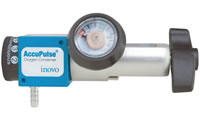 inovo AccuPulse Single Lumen Pneumatic Conserver
inovo AccuPulse Single Lumen Pneumatic Conserver
The inovo AccuPulse Single Lumen Pneumatic Conserver operates quietly and has a 5:1 conserving ratio at every setting. The AccuPulse provides more oxygen when patients need it with a uniform pulse with every breath up to 40 breaths per minute, matching dose to patient need. Controls are easy to read and operate, giving patients less of a chance of accidentally switching to continuous flow. The unit comes with a three-year warranty, is lightweight and compact, and features six conserve and three continuous flow settings on a single control dial.
Sunset Healthcare Solutions
(877) 578-6738
www.sunsethcs.com
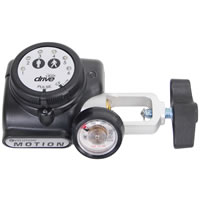 CHAD Evolution Motion Auto-Adjusting Oxygen Conserver
CHAD Evolution Motion Auto-Adjusting Oxygen Conserver
The 14.9 ounce Evolution Motion Auto-Adjusting Oxygen Conserver senses patient motion and activity levels, and adjusts to preset rest and activity dose settings automatically and efficiently. Auto-adjusting conservers optimize both patient saturation and oxygen conservation. This product will match oxygen dose to patient need as defined by motion and activity. This unit can help decrease your delivery costs. The auto shut-off feature lets the Evolution Motion provide a one-year battery life using two standard AA batteries.
Drive Medical Design & Mfg.
(877) 224-0946
www.drivemedical.com
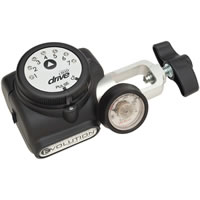 Evolution Electronic Oxygen Conserver
Evolution Electronic Oxygen Conserver
The Evolution OM-900 gives patients a minimum two years of operation using two AA batteries. Highly sensitive technology can sense both weak and strong inhalation patterns. Complete with a wide range of LPM settings, from 1-7 LPM equivalent, as well as a continuous flow setting, the single-lumen design provides a 5:1 savings ratio at all settings, a uniform pulse delivery method, and operation between 200 – 3,000 PSI.
Drive Medical Design & Mfg.
(877) 224-0946
www.drivemedical.com
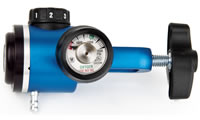 Invacare Element Pneumatic Oxygen Conserver
Invacare Element Pneumatic Oxygen Conserver
The Element Pneumatic Oxygen Conserver consists of a cylinder connection, cylinder contents gauge (if equipped), high-to-lowpressure regulator, orifice plate and a conserving demand module. The regulator reduces the high pressure of the cylinder to the working pressure of the orifice plate. The flow is determined by setting the flow control knob to the prescribed flow, and the oxygen is supplied to the patient though the cannula. Features include compact design, CGA870 compatible, no batteries required, single selector knob controls ON/OFF, liter flow and continuous flow mode.
Invacare Corp.
(800) 333-6900
www.invacare.com
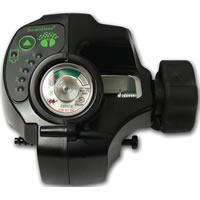 SmartDose Mini Electronic Oxygen Conserver
SmartDose Mini Electronic Oxygen Conserver
The SmartDose Mini CTOX-MN02 is an auto-adjusting electronic conserver that continuously monitors breath rate and adjusts the oxygen dose to match activity at every breath. During activity, the SmartDose will increase the preset rest setting up by as much as to two settings to match the dose to patient need. The SmartDose offers equivalent liter flows from 1-5, a minimum battery life of up to one year with two AA batteries, and an operating pressure from 500 – 3000 PSI. The unit weighs less than 16 ounces with batteries and its auto-adjusting conservers optimize both patient saturation and maximizing conservation.
Drive Medical Design & Mfg.
(877) 224-0946
www.drivemedical.com
This article originally appeared in the August 2014 Respiratory & Sleep Management issue of HME Business.